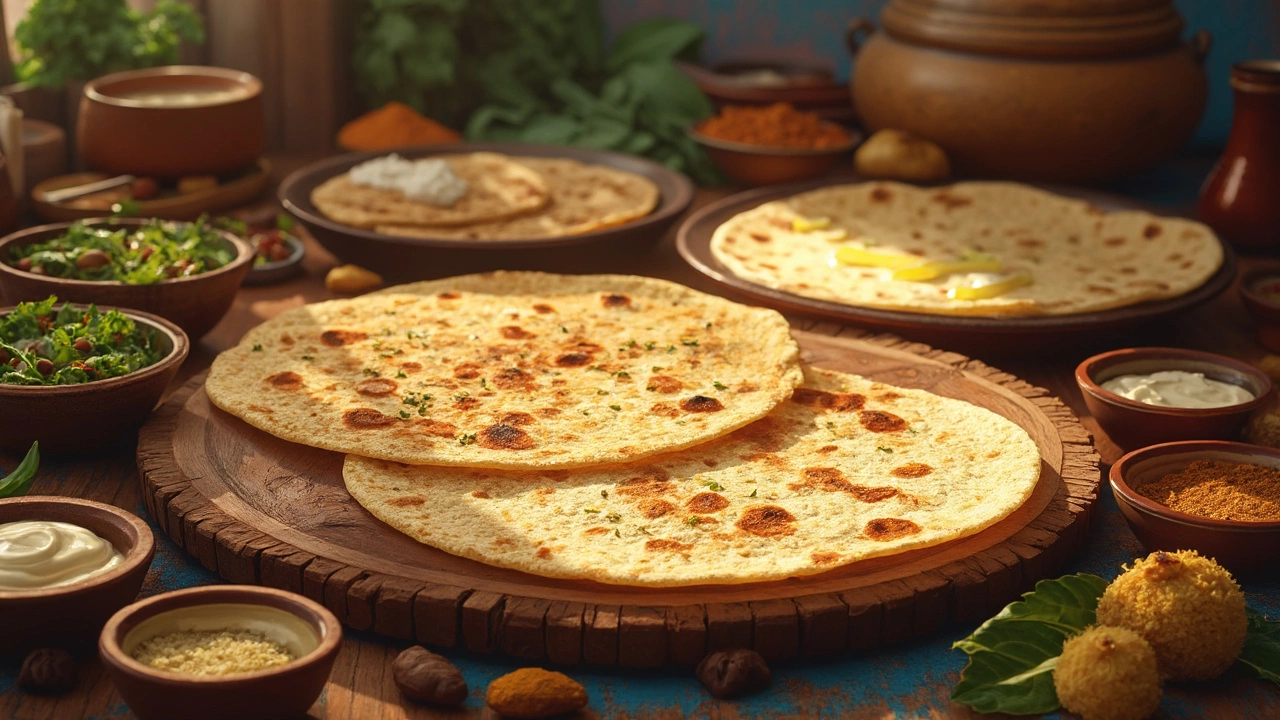Roti Nutritional Content: Calories, Carbs, Protein & More
When you look at Roti Nutritional Content, the breakdown of calories, carbohydrates, protein, fiber and fat in a typical Indian flatbread, also known as roti nutrition, you get a clear picture of how this staple fits into your daily diet. Understanding roti nutritional content helps you decide if a roti fits your meal plan, whether you’re counting calories, watching carbs, or boosting protein. The basic profile of a plain whole‑wheat roti (about 30 g) is roughly 110 kcal, 20 g carbs, 3 g protein, 1 g fiber and less than a gram of fat. Those numbers shift when you add oil, ghee, or butter, or when you swap the flour for a higher‑protein alternative. By grasping these figures, you can pair roti with legumes, vegetables or dairy to hit your macro goals without overdoing any single nutrient.
Key Factors That Shape Roti Nutrition
Traditional whole wheat flour, the main ingredient in most roti recipes supplies the bulk of carbohydrates and dietary fiber, which keeps digestion steady and moderates blood‑sugar spikes. The flour’s glycemic index, typically moderate, determines how quickly the carbs turn into glucose—something athletes and anyone managing weight will notice. Adding a pinch of baking soda, a leavening aid that softens the dough and can reduce the need for extra oil creates tiny air pockets, making the roti puff up and stay softer, which often means you reach for less butter after cooking. The cooking method matters too: cooking on a hot tawa with minimal oil gives a crisp exterior while preserving the inside’s moisture; over‑cooking dries the bread, raising its fiber resistance and making it harder to chew, which can affect nutrient absorption. Portion size is another hidden factor—two small rotis provide about half the calories of a single large one, so serving size directly influences total intake.
Questions like “Why isn’t my roti puffing?” or “Should I add baking soda?” are answered by the same nutritional principles: a well‑hydrated dough, proper kneading, and the right heat produce a roti that inflates, stays tender, and doesn’t need extra fat to be enjoyable. When you combine the right flour, a tiny leavening boost, and mindful cooking, you end up with a flatbread that delivers steady energy, decent protein, and enough fiber to keep you full. Below you’ll find a collection of articles that dive deeper into each of these points—from exact calorie charts to tricks for a softer, more nutrient‑dense roti—so you can start cooking smarter today.

Calories in 1 Roti: Unveiling the Nutritional Facts
Discover the caloric content of 1 roti and understand how different ingredients and cooking methods can change its nutritional profile. Learn about the impact of adding ghee or pairing with sabzi on your meal's calorie count. Get tips on incorporating healthier variations of roti in your diet. Perfect for those curious about balancing pleasure and wellness in everyday meals.